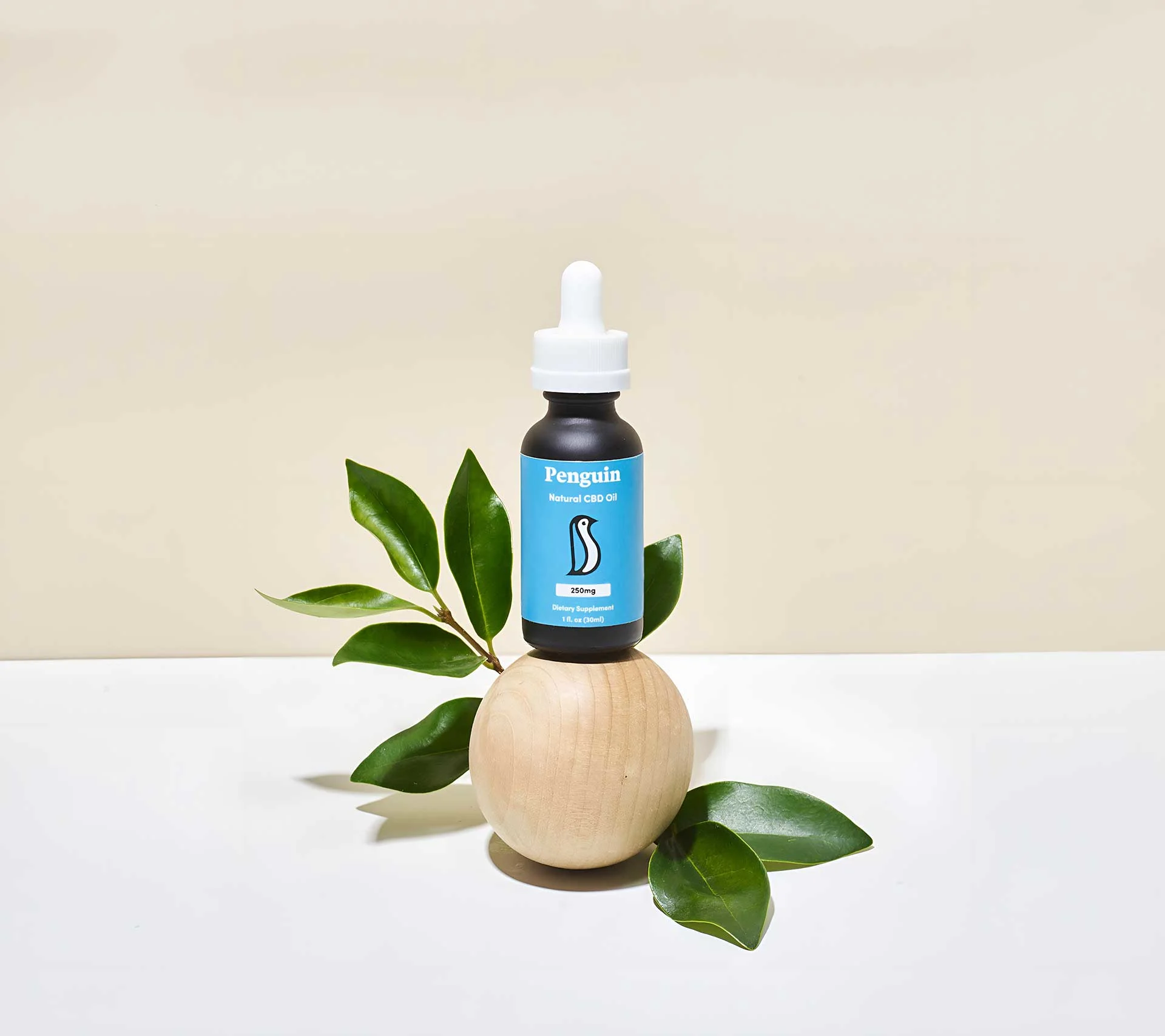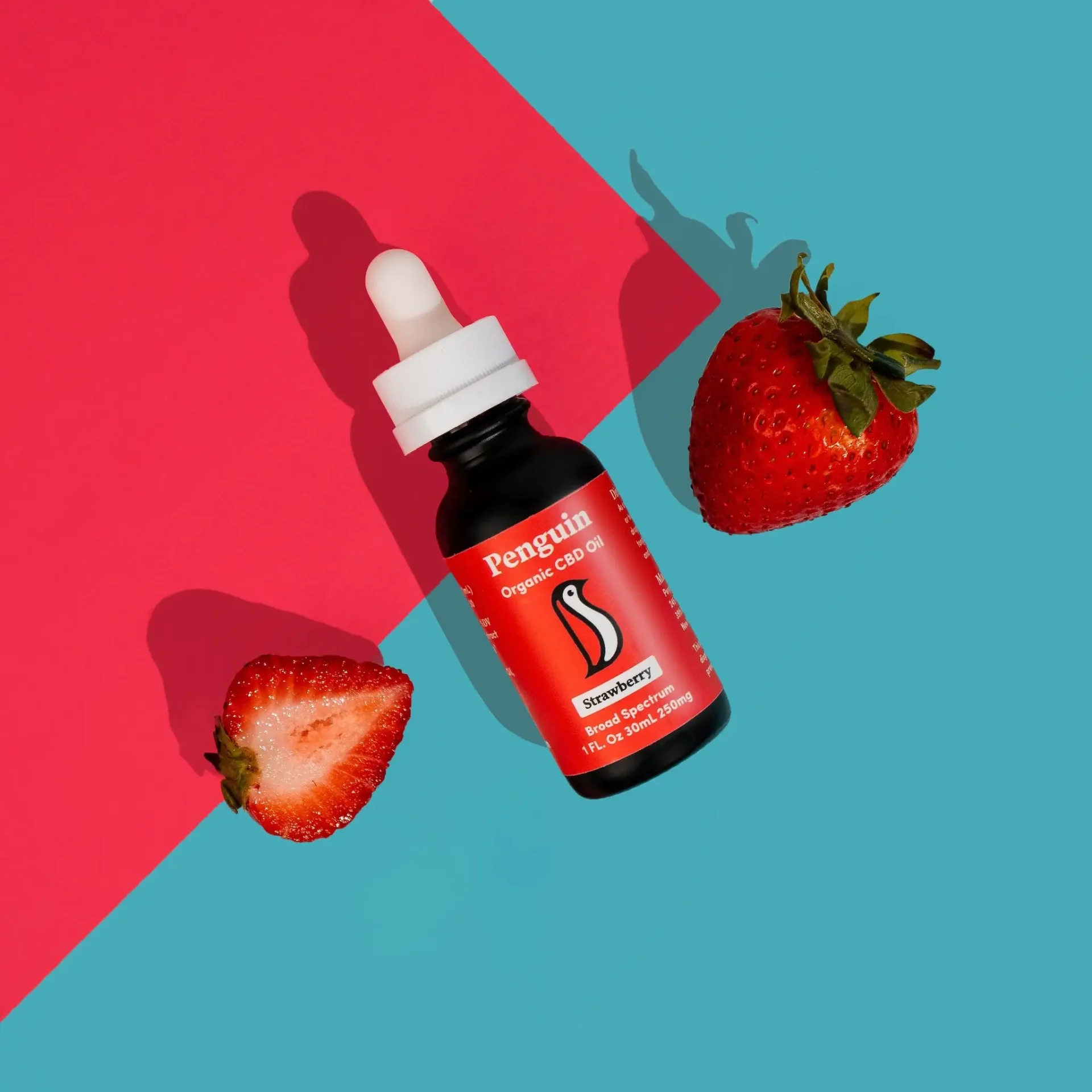A Comprehensive Guide To The Cannabis Plant
 By Penguin CBD
By Penguin CBDAt Penguin, we consider ourselves pioneers in Cannabinoids, forever exploring the Cannabis plant and its many healing abilities. CBD is just one mighty component of this botanical wonder. It’s made such an impact on living things and the potential of this property continues to fascinate us beyond what we ever thought was possible. We want to take you on a tour de force of the Cannabis plant and discuss all of its superpowers. It’s truly made some magnificent scientific breakthroughs and we’re here to shed light on all of the pieces of this plant’s puzzle!

Cannabis. (2024, January 28). In Wikipedia. https://en.wikipedia.org/wiki/Cannabis
Where Did The Cannabis Plant Originate?
The origin of Cannabis Sativa has a rich and intriguing history. This plant has been influencing humankind for almost a millenia beginning 12,000 years ago near the majestic Altai Mountains in Central Asia. This is where the cannabis plant made its debut. It wasn't a random plant; it was a companion to nomadic peoples, its seeds traveled with them as they migrated across different regions.
As these nomads roamed, so did the cannabis plant, spreading its roots and making its mark on various civilizations. The earliest documented use of cannabis in a medicinal context dates back to times before the Common Era. Picture ancient China, where the healing properties of cannabis were recognized and recorded. The plant's therapeutic potential didn't go unnoticed, and its influence began to stretch across cultures and continents.
Throughout its historical context, references to cannabis have been discovered in the ancient civilizations of Egypt and Greece. Herodotus, the Greek historian, sheds light on the use of cannabis in his writings, acknowledging its medicinal value. The plant's reputation as a healer continued to grow, finding its way into the practices of ancient Egyptian and Greek societies. Fast forward to the Roman Empire, where Pliny the Elder, Dioscorides, and Galen contributed to the documentation of cannabis's medicinal applications. In the mosaic of ancient knowledge, cannabis emerged as a multifaceted herb with potential benefits for a range of ailments.
The 19th century marked a pivotal chapter in the history of cannabis as it journeyed from the East to the West. Orientalists such as Silvestre de Sacy played a role in introducing Western audiences to the plant's uses. Meanwhile, Western physicians, notably O'Shaughnessy and Moreau de Tours, encountered the medicinal applications of cannabis during their interactions with Muslim and Indian cultures. This cross-cultural exchange brought medicinal cannabis to the forefront of European medicine.
Cannabis was no longer confined to the landscapes of Central Asia; it had become a global player in the pharmacopeia of healing. A defining moment in the modern understanding of cannabis came in 1964 when Israeli researchers Mechoulam and Gaoni identified the structure of tetrahydrocannabinol (THC), the primary psychoactive compound in cannabis. This discovery was nothing short of groundbreaking, opening the floodgates to a new era of scientific exploration. CBD was not yet a front-runner in this process and was kind of tossed aside or not recognized due to its non-psychoactive effects. THC stole the show in the early ages of discovery.
With the mystery of THC unraveled, scientists embarked on a journey to understand the endocannabinoid system (ECS), the intricate network within the human body that interacts with cannabinoids. The ECS revelation transformed the discourse around cannabis, elevating it from the realms of ancient remedies to a subject of cutting-edge scientific inquiry.
The advances in ECS research added a fresh perspective to the ongoing debate on cannabis liberalization. No longer just a plant with a historical reputation, cannabis was now seen through the lens of a complex interplay between cannabinoids and the human body's regulatory system.
As we stand on the shoulders of centuries of knowledge and discovery, the conversation about cannabis has evolved. It's not just about its ancient origins or documented uses; it's about unlocking the potential encoded in its genetic makeup and understanding the profound impact it can have on human health and well-being.
So, here we are, at the crossroads of history and science, with cannabis weaving its intricate tapestry through time. From the nomadic tribes of Central Asia to the laboratories of modern researchers, the journey of cannabis is a testament to its worth and its value in healing. As we continue to explore its depths, who knows what new chapters and revelations await in the unfolding story of this remarkable plant.

Elements Of The Cannabis Plant
Now that we are caught up on some of the history of this life-changing herb, let’s discuss its elements. The cannabis plant contains many parts, each having their own individual function. Here’s a list of key components before we discuss each of these in depth:
- Cannabinoids: These are chemical compounds unique to the cannabis plant. The two most well-known cannabinoids are THC (tetrahydrocannabinol) and CBD (cannabidiol). THC is psychoactive and responsible for the "high" associated with cannabis, while CBD is non-psychoactive and has therapeutic benefits.
- Terpenes: Terpenes are aromatic compounds found in many plants, including cannabis. They contribute to the plant's fragrance and may have therapeutic effects. Different cannabis strains have distinct terpene profiles that influence the overall experience and effects.
- Flavonoids: Flavonoids are compounds responsible for the colors in plants, including cannabis. They have antioxidant properties and contribute to the plant's therapeutic effects. Flavonoids are not unique to cannabis but play a role in its medicinal properties.
- Cannabigerol (CBG): This is another cannabinoid found in cannabis. It is a precursor to other cannabinoids, and research suggests potential therapeutic applications, including anti-inflammatory and neuroprotective effects.
- Cannabinol (CBN): CBN is a cannabinoid that forms as THC degrades. It has mild psychoactive effects and is often associated with sedation. Some research suggests potential benefits for sleep.
- Cannabichromene (CBC): CBC is a non-psychoactive cannabinoid that may have anti-inflammatory and analgesic properties.
- Omega Fatty Acids: Cannabis seeds are a good source of omega-3 and omega-6 fatty acids, essential for overall health.
- Proteins: Cannabis seeds also contain proteins, rich in amino acids, making them a potential source of nutrition.
Cannabinoids: How Did CBD Make Its Mark?
CBD gained widespread attention and recognition for its potential health benefits, which propelled it onto the mainstream stage. Several key factors contributed to putting CBD on the map:
- Discovery of Health Benefits: While CBD was isolated in 1940, its potential health benefits started to gain significant attention in the early 2000s. Researchers and scientists began exploring its various therapeutic properties, including anti-inflammatory, analgesic, and anxiolytic effects.
- Epilepsy Treatment: One of the pivotal moments for CBD's recognition came with its association with the treatment of epilepsy, particularly in children. High-profile cases, such as that of Charlotte Figi, a young girl with a severe form of epilepsy, showcased CBD's potential to reduce the frequency and severity of seizures.
- Legislation Changes: Changes in cannabis-related legislation in some regions, particularly the U.S., allowed for increased research and exploration of CBD. The 2018 Farm Bill in the United States, for example, legalized the industrial cultivation of hemp, making it easier to extract CBD from hemp plants.
- Media Coverage: Media outlets began to cover stories of individuals experiencing positive outcomes with CBD, creating public interest and awareness. Documentaries, news articles, and testimonials contributed to a growing curiosity about the potential benefits of CBD.
- Holistic Wellness Trends: The increasing focus on holistic health and wellness played a significant role in CBD's rise to prominence. Consumers sought natural alternatives, and CBD, being a non-psychoactive compound, fit well within the wellness trend. Its potential to address conditions like anxiety, pain, and sleep disorders appealed to a broad audience.
- Product Availability: The availability of diverse CBD products, ranging from oils and tinctures to edibles and skincare items, made it more accessible to consumers. CBD became a common ingredient in a variety of products, contributing to its integration into mainstream consumer markets.
- Scientific Research: Ongoing scientific research and clinical studies investigating CBD's effects on various health conditions added credibility to its potential therapeutic applications. This research helped demystify CBD and provided a scientific basis for its use in certain medical contexts.
These combined factors created a perfect storm, propelling CBD into the limelight and establishing it as a popular and sought-after botanical in the health and wellness landscape. Today, CBD is a prevalent ingredient in a wide range of products, and its popularity continues to grow as more research unfolds and consumers seek natural alternatives for better health.

Terpenes: The Aroma Effect
Cannabis terpenes are the lovely aromatic properties found in the essential oils of the cannabis plant that are gaining recognition for their diverse uses. Terpenes are not unique to cannabis; they are found in various plants and contribute to their distinct scents and flavors. However, in cannabis, terpenes go beyond providing fragrance—they interact with cannabinoids in a phenomenon known as the entourage effect, influencing the overall effects and therapeutic potential of the plant. Terpenes assist the effects of cannabinoids such as THC and CBD and work in tandem with other aspects of the plant producing a more effective result when used together than in isolated use.
Each terpene has a different profile, similar to snowflakes; different cannabis strains contain varying combinations and concentrations of these compounds, contributing to the plant's distinct aroma and effects. For example, the terpene myrcene is associated with a calm and relaxing effect, while limonene may impart a citrusy scent and has been known to energize and elevate mood.
Terpenes are believed to influence not only the psychoactive effects of cannabis but also its therapeutic potential. Research suggests that terpenes can interact with neurotransmitter receptors, such as the serotonin and dopamine receptors, impacting mood and behavior. Additionally, some terpenes have demonstrated anti-inflammatory, anti-anxiety, and analgesic properties.
A study published in the British Journal of Pharmacology in 2011 highlighted the potential of terpenes to influence the pharmacokinetics of cannabinoids. The study, titled "Taming THC: Potential Cannabis Synergy and Phytocannabinoid-Terpenoid Entourage Effects," proposed that terpenes could enhance the therapeutic effects of cannabinoids while mitigating undesirable side effects. This source claims that the synergistic interactions between cannabinoids and terpenes emphasizes their combined therapeutic potential.
It's important to note that the understanding of cannabis terpenes is still evolving, and further research is needed to fully grasp their individual and collective effects. As the scientific community delves deeper into the intricacies of cannabis, terpenes are emerging as key players in shaping the plant's diverse effects and potential applications in medicine and wellness. Aside from being aromatic, terpenes are a support system to the plant and its powers!
Flavonoids: A Colorful Touch
Flavonoids, a group of naturally occurring compounds found in plants, contribute to the colorful pigments in flowers, fruits, and leaves. In the context of the cannabis plant, flavonoids play a crucial role beyond aesthetics—they bring a spectrum of potential health benefits and contribute to the overall effects of the plant.

Cannabis flavonoids, like other phytochemicals, serve as secondary metabolites, and their presence in the plant is not limited to aesthetics alone. These compounds have antioxidant, anti-inflammatory, and potential neuroprotective properties, making them valuable contributors to the therapeutic profile of cannabis.
Quercetin, kaempferol, and apigenin are examples of flavonoids commonly found in cannabis. Quercetin, in particular, has been recognized for its antioxidant and anti-inflammatory effects. These properties may contribute to the overall health-promoting characteristics of cannabis and its potential applications in supporting the body's natural defense mechanisms.
One significant study supporting the role of flavonoids in cannabis was published in The Journal of Phytochemistry in 2016. The study, titled "Cannaflavins from Hemp Sprouts, a Novel Cannabinoid-Free Hemp Food Product, Target Microsomal Prostaglandin E2 Synthase-1 and 5-Lipoxygenase," highlighted the anti-inflammatory effects of certain flavonoids found in hemp sprouts. The research demonstrated the potential of these flavonoids to modulate enzymes involved in the inflammatory response, shedding light on their therapeutic potential”
Beyond their individual effects, flavonoids in cannabis may also work synergistically with cannabinoids and terpenes in what is known as the entourage effect. This concept suggests that the combination of various cannabis compounds enhances their overall therapeutic impact, creating a more comprehensive and effective outcome than the isolated compounds alone.
While the research on cannabis flavonoids is still in its early stages, these compounds hold promise for contributing to the plant's potential health benefits. As scientific exploration continues, a deeper understanding of the specific roles of flavonoids in the cannabis plant and their synergistic interactions with other compounds will likely unfold, paving the way for new insights into the intricate world of cannabis chemistry.
Cannabigerol, CBG, The Other Cannabinoid…
Cannabigerol, commonly known as CBG, is one of the many cannabinoids found in the cannabis plant. While not as well-known as THC or CBD, CBG is gaining attention for its unique role in the complex chemistry of cannabis.
CBG is often referred to as the "mother cannabinoid" because it is considered a precursor to other cannabinoids like THC and CBD. In the early stages of the cannabis plant's flowering phase, CBGA (cannabigerolic acid), the acidic form of CBG, is synthesized. Enzymes then break down CBGA into THCA (tetrahydrocannabinolic acid), CBDA (cannabidiolic acid), and CBCA (cannabichromenic acid), which are the gateways to THC, CBD, and CBC, respectively. As the plant matures, CBG becomes less prevalent, as it transforms into these other cannabinoids.
CBG interacts with the endocannabinoid system (ECS), a complex network of receptors and signaling molecules in the body that regulates various physiological functions. While research on CBG is still in its early stages, studies suggest that it may have several potential health benefits. One of the key aspects that make CBG special is its potential anti-inflammatory properties. Research has shown that CBG may interact with CB2 receptors in the ECS, which are primarily associated with the immune system. This interaction could play a role in balancing inflammatory responses, making CBG a subject of interest when it comes to inflammation.
CBG has also shown promise in its potential neuroprotective effects. Some studies suggest that it may have a role in protecting nerve cells, making it a candidate for further exploration in conditions related to neurodegeneration and could be useful in Alzheimer’s patients.
Furthermore, CBG is being investigated for its potential in managing intraocular pressure, which is relevant to conditions like glaucoma. Studies have indicated that CBG may have a role in reducing intraocular pressure, contributing to its potential as a therapeutic agent in eye health.
As the cannabis industry and scientific community continue to explore the diverse components of the cannabis plant, CBG is emerging as a cannabinoid with unique attributes and potential therapeutic applications. Its role as a precursor to other cannabinoids, coupled with its distinctive effects on the endocannabinoid system, makes CBG an intriguing subject of study and a valuable addition to the expanding repertoire of cannabis-derived compounds with potential health benefits.

Cannabinol (CBN) Soothing The Sleep Dilemma
Cannabinol, commonly known as CBN, is another cannabinoid found in the cannabis plant. Yes there are more! While it is not as abundant as THC or CBD, CBN has gained attention for its potential therapeutic properties and its unique role in the overall cannabinoid profile.
CBN is formed through the maturation of THC, particularly when exposed to light and air. As THC oxidizes over time, it converts into CBN. aged cannabis products may contain higher levels of CBN. This transformation has led to the association of CBN with the sedative or relaxing effects often attributed to aged cannabis, just like a fine wine!
Research on CBN is still in its early stages. One of the notable aspects of CBN is it has shown promise as a sleep aid. A 2019 study published in The Journal of Sleep Science investigated the effects of CBN on sleep in rats. The study found that CBN, when administered in combination with THC, demonstrated sedative effects, indicating its potential role in promoting sleep.
Additionally, CBN has been explored for its potential anti-inflammatory and analgesic properties. A study published in the journal of Pharmacology, Biochemistry, and Behavior in 2008 investigated the anti-inflammatory effects of CBN in mice. The findings suggested that CBN, along with THC, exhibited anti-inflammatory properties, contributing to the understanding of cannabinoids beyond the well-known THC and CBD.
While CBN is not as extensively studied as some other cannabinoids, its unique characteristics and potential therapeutic applications make it an intriguing subject for further research. As the scientific community continues to research the complexities of the cannabis plant, understanding the specific mechanisms and benefits of CBN may contribute to expanding the range of therapeutic options derived from this versatile plant.
Cannabichromene (CBC) & Cancer Research
Cannabichromene (CBC), a lesser-known cannabinoid in cannabis, is gaining attention for its potential neuroprotective and anticancer properties. While research is in the early stages, studies suggest that CBC may play a role in supporting neurological health.
CBC demonstrated neuroprotective effects in a mouse model of neuroinflammation, indicating its potential in mitigating damage to the nervous system. CBC's interaction with both CB1 and CB2 receptors in the endocannabinoid system, as well as its engagement with transient receptor potential (TRP) channels, supports its anti-inflammatory and neuroprotective potential.
Additionally, emerging research hints at CBC's potential anticancer properties. A study published in the Journal of Cannabis and Cannabinoid Research in 2018 explored the anti-tumor effects of various cannabinoids, including CBC. The findings suggested that CBC, along with other cannabinoids, exhibited antitumor effects in colorectal cancer cells. In addition to this, cannabinoids have primarily been used as a part of palliative care to alleviate pain, relieve nausea and stimulate appetite. Numerous cell culture and animal studies showed antitumor effects of cannabinoids and suggested new therapeutic opportunities for cancer patients.
However, recent research also emphasizes the importance of safety measures when using cannabinoids, since these compounds can potentially impair cognitive functions, especially in adolescents. Demonstrating its potential as a cancer-fighting compound, CBC shows potential as a neuroprotectant, particularly for conditions like Alzheimer's disease.
Studies on mice revealed that CBC positively affected neural stem progenitor cells (NSPCs), crucial for healthy brain function, enhancing their viability and potentially countering oxidative stress. Additionally, CBC, when combined with CBD and THC, holds promise for treating acne and depression.
While more research is needed to fully understand CBC's mechanisms and therapeutic potential, its dual action as a neuroprotective agent and a possible contributor to anticancer earns it a seat at the table in the expanding landscape of cannabis research. As scientists delve deeper into the complexities of cannabinoids, CBC emerges as a promising compound with diverse potential applications in both neurological and oncological health.

Omega Fatty Acids & A Complete Plant Based Protein
If you’re practicing healthy living and balanced nutrition then it’s likely you know about protein and amino acids, the building blocks of life! Trying to get healthy protein into your diet can sometimes be challenging, but the Cannabis sativa plant, specifically hemp seeds, offers protein and stands out as a nutritional powerhouse! Hemp seeds contain a rich content of omega fatty acids. These small seeds are a robust source of both omega-3 and omega-6 fatty acids, presenting a well-balanced profile.
Omega-3 fatty acids, notably alpha-linolenic acid (ALA), are abundantly present in hemp seeds. ALA is a precursor to other essential omega-3s like EPA and DHA. These fatty acids are celebrated for their anti-inflammatory properties, cardiovascular benefits, and support for brain health. Adding hemp seeds to your diet provides a plant-based source of omega-3s, especially valuable for individuals seeking alternatives to fish-derived oils.
The omega-6 fatty acid linoleic acid in hemp seeds also contributes to the maintenance of healthy skin, hair, and overall cellular function. The balanced ratio of omega-3 to omega-6 in hemp seeds meets the recommended dietary proportions for optimal health.
Hemp seeds are a complete source of plant-based protein, packed with essential amino acids. Hemp protein is easily digestible and provides a sustainable and environmentally friendly alternative to animal-based protein sources. This makes hemp seeds a valuable addition to any diet but has been sought after in vegetarian and vegan diets, supporting muscle repair, immune function, and overall protein needs.
In addition to their omega fatty acid profile and protein content, hemp seeds offer an array of essential nutrients, including vitamins, minerals, and fiber. They can be cooked into various dishes, from salads and smoothies to baked goods. Hemp seeds are a great choice to add to a well-rounded diet for an extra source of essential nutrients that fall in line with sustainable and plant-based nutrition choices.
At Penguin, we are CBD enthusiasts and we love to explore the many benefits of the Cannabis plant as a whole source of medicine in all of its various forms. The many facets and components of this plant make up a great medicinal puzzle. We are endlessly fascinated by both the entourage effect of the different parts of the plant and how they work in tandem with each other, as well as their isolated abilities.
We enjoy being your go to space for all things CBD! We believe in the power of CBD for overall health. Our passion is sharing and spreading the word of CBD for better self-care for a better life! Thanks for joining and following along with the Penguin community. Want to share your story with us? We would love to hear how Penguin Products have helped you, reach out and connect! Or send us an email happy@penguincbd.com.










